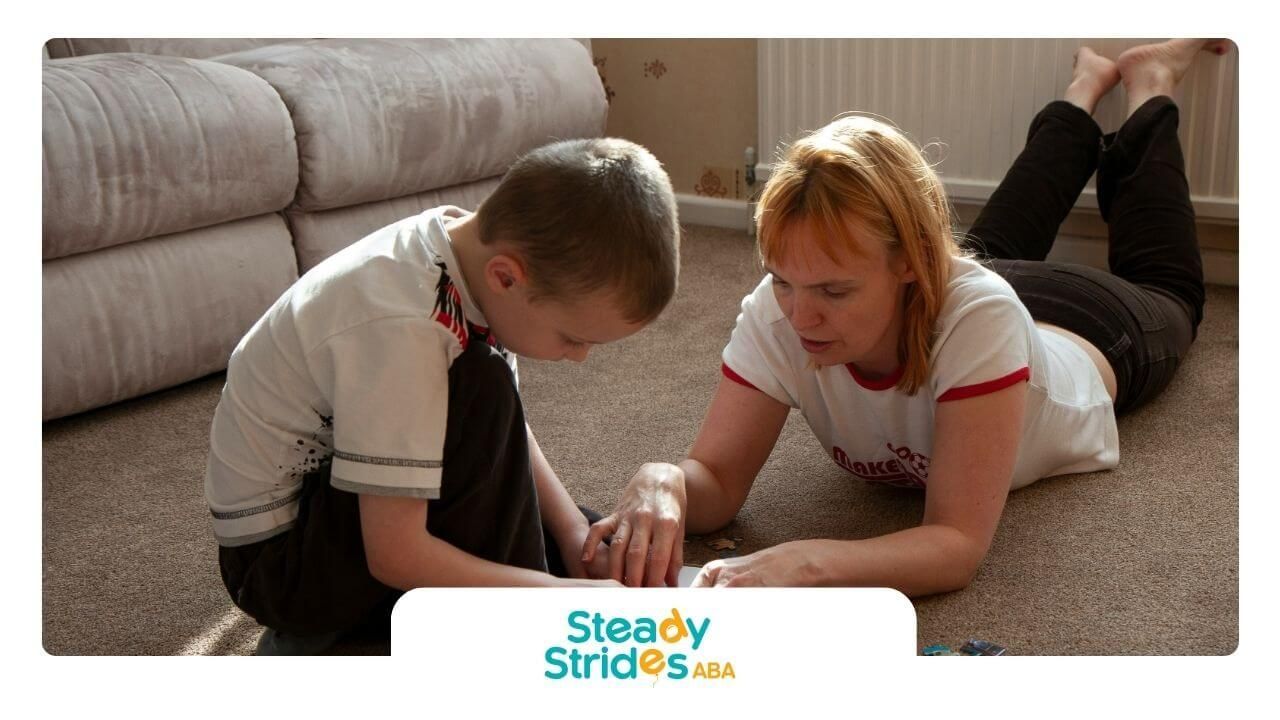Understanding Autistic Masking
Definition of Autistic Masking
Autistic masking, also known as camouflaging, refers to the behaviors exhibited by individuals on the autism spectrum to suppress or hide their natural autistic traits. This can include mirroring the behaviors of neurotypical people, scripting conversations, and even developing detailed rules for social interactions to appear neurotypical. Masking frequently involves maintaining eye contact despite discomfort, copying body language and tones of others, and closely monitoring these behaviors to fit in socially.
This conscious or subconscious effort to blend in can complicate the diagnosis of autism spectrum disorder (ASD) and often conceals the person’s need for support. Masking is a learned coping strategy that can have both positive and negative implications. For additional insights into identifying masking behavior, visit our article on signs of autistic masking.
| Behavior | Purpose |
|---|---|
| Mirroring | To match neurotypical behavior |
| Scripting | To navigate social conversations |
| Eye Contact | To appear engaged |
| Monitoring | To ensure behaviors align with social norms |
Motivations for Masking
Individuals on the autism spectrum adopt masking behaviors for various motivations, primarily driven by the need for social acceptance and to avert negative interactions. Some common motivations include:
- Social Acceptance:
The desire to fit in with peers and be perceived as 'normal'.
- Employment: Securing and maintaining jobs often requires appearing socially adept.
- Avoidance of Ostracism:
Preventing social exclusion or bullying.
- Preventing Abuse: Reducing the risk of verbal or physical abuse in school or workplace settings.
While masking can facilitate social interactions and provide some level of confidence, it also has negative consequences such as emotional exhaustion, loneliness, and identity crises. Understanding the reasons behind masking can help in creating supportive environments that reduce the need for such behaviors. For guidance on how to minimize the adverse effects of masking, read our article on how to stop autistic masking.
By recognizing these motivations and the strain they place on individuals with ASD, educators, ABA therapists, and family members can better support their loved ones and clients. Additional information about how masking affects adults can be found in our article on autistic masking in adults.
Impact of Autistic Masking
Adverse Mental Health Outcomes
Autistic masking is associated with several adverse mental health outcomes. This coping strategy may lead to heightened stress, anxiety, depression, and suicidality. Research indicates a consistent link between masking and mental health issues such as depression, generalized anxiety, and social anxiety across various age groups, including children, adolescents, and adults. Several individuals who mask their autistic traits report feeling exhausted and disconnected from their true identity, which can exacerbate these mental health conditions. More information about the effects of masking on mental health can be found in our detailed article on
autistic masking and burnout.
| Mental Health Condition | Prevalence in Masking Individuals |
|---|---|
| Depression | High |
| Generalized Anxiety | High |
| Social Anxiety | High |
Challenges in Diagnosis
Masking can complicate the diagnosis of autism spectrum disorder (ASD). By consciously or unconsciously concealing their autistic traits, individuals may suppress or compensate for symptoms, making it difficult for healthcare professionals to identify the need for support. This phenomenon is particularly evident among females, who often go under-diagnosed as a result of effective masking. The official diagnostic criteria for ASD acknowledge the presence of autistic behaviors and difficulties even if they are successfully masked. The ability to diagnose ASD accurately despite masking is a critical area of focus within the medical community.
Research on Autistic Masking
Research on autistic masking has gained momentum since the 2010s. The development of the Camouflaging Autistic Traits Questionnaire (CAT-Q) in 2018 marked a significant milestone in measuring the extent to which individuals use strategies to mask their autistic traits. The CAT-Q helps quantify how individuals compensate for social difficulties, hide autistic characteristics, and attempt to fit in socially. Despite its utility, some researchers argue that self-report measures like the CAT-Q may exclude certain groups within the autism spectrum, limiting the scope of the research.
| Year | Key Research Development |
|---|---|
| 2010s | Focus on academic research on masking |
| 2018 | Introduction of the CAT-Q |
By comprehending the impact of autistic masking on mental health, diagnosis, and research, concerned individuals and professionals can better support those with ASD, fostering more accepting and inclusive environments.
Coping Strategies for Masking
Negative Consequences of Masking
Autistic masking, the act of hiding one's autistic traits to fit in with societal expectations, significantly impacts the mental health and overall well-being of autistic individuals. Those who engage in masking often face several adverse outcomes:
- Mental Exhaustion:
Constantly altering behavior to meet social expectations requires immense mental energy. Autistic people often compare this to rewriting every fiber of their being to suit various situations, leading to chronic fatigue.
- Identity Disconnection: Masking frequently results in a disconnection from one's true self. Many feel they are living a double life, which can contribute to a weakened sense of identity.
- Mental Health Issues:
The continuous effort to mask can lead to increased anxiety, depression, and other mental health issues. The NCBI reports that autistic individuals who mask experience
higher levels of suicidality compared to non-autistic groups.
- Dangerous Coping Mechanisms: To manage the stress of masking, some engage in harmful behaviors such as restricted eating and substance use.
Overcoming Masking Challenges
Addressing the challenges associated with masking involves adopting strategies that promote authenticity and mental well-being:
- Seek Supportive Environments: It's crucial to be in surroundings where one feels accepted without the need to mask. Creating inclusive spaces at home, in educational settings, and in workplaces can alleviate the pressure to camouflage autistic traits.
- Self-Acceptance and Advocacy: Encouraging self-acceptance and empowering individuals to advocate for their needs can foster a positive self-image. Communities and support groups can play a pivotal role in this regard.
- Professional Support:
Therapy and counseling can provide autistic individuals with tools to manage the stress of masking. Cognitive-behavioral strategies and mindfulness techniques can be particularly beneficial.
- Gradual Unmasking: Gradually reducing the extent of masking in safe environments can help individuals reclaim their true identities. Learning how to stop autistic masking involves taking small steps towards authenticity while pacing oneself.
Autistic Masking in Social Settings
Autistic masking can greatly impact an individual's interactions and experiences in social settings. This section delves into real-life scenarios of masking and its effects on mental and emotional well-being.
Real-Life Masking Scenarios
Autistic individuals often adopt various masking strategies to blend in and be more accepted by their neurotypical peers. These strategies can occur in both formal and informal interactions and are often developed by observing and mirroring the behaviors of others.
Some common masking behaviors include:
- Maintaining eye contact despite discomfort.
- Mirroring body language and tone of others.
- Scripting conversation outlines to guide social interactions.
- Developing "rules" for conversations and constantly monitoring to ensure these rules are followed.
Masking behaviors can be employed in various settings:
- School or Work: In formal environments, autistic individuals might mask to avoid standing out or facing negative consequences. They might strive to meet social expectations by regulating their behaviors to match those of their neurotypical peers.
- Home or with Friends: Even in more relaxed social settings, autistic individuals might feel compelled to mask to gain acceptance or to avoid conflicts. This could involve people-pleasing behaviors, which make them vulnerable to manipulation.
Effects on Mental and Emotional Well-being
Constant masking can take a significant toll on an autistic individual's mental and emotional health. The effort required to continuously monitor and adjust one's behavior can lead to various adverse outcomes.
Identity Crisis
- Many autistic individuals report feeling the need to shape themselves into something else to be accepted, which can result in an identity crisis. This is particularly challenging for those who discovered their autistic identity later in life, as they may struggle with a sense of belonging and self-awareness.
Emotional Distress
- The perpetual act of masking can lead to severe emotional distress. Constantly suppressing one's natural traits and behaviors to fit societal norms can cause anxiety, depression, and even a sense of detachment from one's true self.
People-Pleasing and Vulnerability
- Fawning and people-pleasing behaviors, which are often adopted as part of masking, can make individuals more susceptible to manipulation and abuse. This reduces their personal agency and ability to prioritize their own needs, further exacerbating mental health challenges.
Understanding these challenges and their implications is crucial for parents, educators, and professionals working with autistic individuals. Creating a supportive and accepting environment can help mitigate the negative effects of masking.
Autistic Masking and Identity
Exploring the relationship between autistic masking and identity reveals the profound impact this behavior can have on individuals with Autism Spectrum Disorder (ASD). Masking involves significant efforts to conform to societal expectations, often at the cost of one's true self.
Loss of Self
The act of masking requires autistic individuals to modify or suppress core aspects of their personalities to fit into a neurotypical society. This effort can lead to a profound sense of loss of self, where individuals feel disconnected from their own identities.
Common masking behaviors include:
- Maintaining eye contact despite discomfort
- Mirroring body language and tone
- Scripting conversation outlines
- Developing conscious "rules" for conversations
- Monitoring these rules to ensure adherence
Such continuous self-regulation creates an exhausting cycle, resulting in mental and physical fatigue, or even autistic burnout. The constant monitoring and suppression of natural instincts and coping mechanisms, such as stimming, exacerbate feelings of disconnect and loss of identity.
Coping Mechanisms and Unmasking
Given the negative consequences associated with masking, developing effective coping mechanisms and strategies for unmasking is crucial. Here are some methods that can help autistic individuals cope better and embrace their authentic selves:
Self-Awareness and Acceptance:
- Understanding personal triggers and the reasons behind masking behaviors
- Embracing autistic traits and recognizing their value
Seeking Support:
- Building a network of understanding friends, family, and professionals
- Joining support groups where individuals can share experiences and strategies
Self-Care Practices:
- Engaging in activities that provide relaxation and comfort
- Ensuring adequate rest and managing stress levels to prevent burnout
Advocacy and Education:
- Promoting awareness and acceptance of autism in various settings
- Educating others about the challenges of masking and its impact on mental health
Therapeutic Interventions:
- Consulting with therapists to develop personalized strategies for reducing the need to mask
- Exploring alternative coping mechanisms that allow for self-expression
Individuals may find benefits in both masking and unmasking. Some report that masking can facilitate social interactions and boost confidence, while also acknowledging the negative aspects, such as exhaustion and identity crises.
It's essential to strike a balance between these coping mechanisms and the pursuit of unmasking, creating environments that are accepting and inclusive of autistic traits. This balance can significantly reduce the pressure to mask and improve overall well-being.
Addressing Stigma and Misconceptions
Building Accepting Environments
Addressing the stigma and misconceptions surrounding autistic masking is essential for creating a supportive and inclusive environment for individuals with Autism Spectrum Disorder (ASD). Masking involves altering core aspects of oneself to conform to social norms, which can lead to significant mental and physical exhaustion.
Creating an accepting environment begins with awareness and education. Professionals, educators, and family members can play a pivotal role by:
- Educating Themselves:
Understanding the definition of autistic masking and its implications can lead to more empathetic interactions.
- Advocating for Acceptance:
Encourage acceptance of stimming (self-stimulatory behavior), sensory needs, and other autistic traits, reducing the pressure for individuals to mask their true selves.
- Promoting Open Dialogue:
Foster an environment where autistic individuals feel comfortable sharing their experiences without fear of judgment.
- Providing Safe Spaces: Offer sensory-friendly spaces in schools and workplaces where individuals can feel secure and unpressured to mask.
Creating Inclusive Practices
Implementing inclusive practices helps mitigate the need for autistic individuals to mask, thus decreasing the associated negative outcomes such as burnout and identity crises. Some effective strategies include:
- Flexible Learning and Work Environments:
- Personalized Accommodations: Adapt educational and work settings to meet individual sensory and social needs.
- Remote and Hybrid Options: Allow for remote learning or working to reduce sensory overload and social anxiety.
- Comprehensive Support Systems:
- Peer Mentorship:
Pair neurotypical individuals with autistic peers for mutual learning and support.
- Professional Training:
Regular training for educators and employers on autism acceptance and the adverse consequences of masking.
- Policy and Practice Adjustments:
- Inclusive Policies:
Develop policies that promote inclusion and prevent discrimination based on neurodiversity.
- Anonymous Feedback: Create channels for anonymous feedback to continually improve practices and address specific needs.
By addressing the misconceptions and promoting understanding, society can work towards reducing the pressures that lead individuals to mask. This not only improves the mental and emotional well-being of autistic individuals but also fosters a more inclusive and diverse community.
SOURCES:
https://www.henryford.com/blog/2023/04/autism-masking
https://en.wikipedia.org/wiki/Autistic_masking
https://laconciergepsychologist.com/blog/problematic-coping-masked-autistic-people/
https://www.autism.org.uk/advice-and-guidance/topics/behaviour/masking
https://pmc.ncbi.nlm.nih.gov/articles/PMC8992921/
https://leafcare.co.uk/blog/tips-for-autistic-individuals-to-manage-masking-autism/













